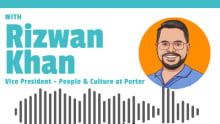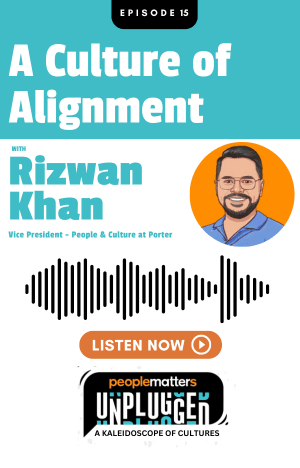Moments thinking is critical to improving the EX dimension continuously: Darwinbox’s Shaswat Kumar

As we continue to put our best foot forward and make the most of every opportunity in 2023, employee experience (EX) is an equally important area that calls for innovation. In the evolving world of work, where flexibility remains a central value, organisations must make concerted efforts to plug any experience gaps. They must keep a pulse on the changing employee needs and dive deeper into building a people-centric culture. In this exclusive interview, we get strategic insights from Shaswat Kumar, Sr. VP- Global Customer Success & Delivery of Darwinbox, on what it takes to reimagine EX for the future of work.
Here are some excerpts.
In 2023, what key talent trends will impact employees’ expectations from their organisations?
It is worthwhile to step back a couple of years and understand the turmoil that everyone has been through. There has been media amplification around the great talent war, talent switching jobs and then jobs going away and layoffs. But what remains central is how employers need to engage their employees more as they seek meaning and purpose in their jobs. The need for organisations to invest in their career growth will come to the fore, and employers will have to demonstrate their commitment towards that. There will also be a lot more friction or opportunity to improve employee-manager dynamics in the overall ecosystem.
Health and wellness will remain a constant priority, which is a factor of post-Covid behaviour and the rise in the average age of the organised workforce.
This means that organisations will have to look at EX beyond system design. EX ultimately is the holistic connection an employee lives through daily as they work in the organisation. Systems such as Darwinbox are working towards enabling that larger ecosystem of experience beyond platform experience. This enablement is critical because the biggest challenge remains behavioural change. If leaders or managers are not changing their behaviour, then the change in EX that people expect will not happen.
For the new-age workforce, a sense of purpose plays a central role in their productivity. How can organisations strengthen that sense of ownership and purpose among their workforce? Additionally, how does a sense of belonging factor in?
There is this hype around ownership behaviour, founder’s mentality, a growth mindset, aligned behaviour and engagement science that seeks to answer what makes an employee strive beyond the normal scope of duty within an organisation. However, employees also want to see that same sense of transparency and ownership in the employer.
When creating a sense of purpose, we must consider what the organisation stands for and what employee demographics will align with it. In Asia, there is this pressure to hire and scale up fast, and that’s exactly where we need to check how recruitment channels filter these purpose-driven values. While intelligent tools are on the scene, hiring through networks and referrals will play a key role in finding culturally fit talent. Purpose-driven organisations often struggle when onboarding mid to senior-level talent because purpose gets ingrained when employees grow from within.
Inevitably, organisations driving purpose and culture will have to think about whole behaviour across teams, team interactions, the workspace and finally, the connection between behaviours and their consequences. This calls for thinking about positive and negative outlier behaviours. How you drive their consequences will define the culture you want to build.
Among our clients, Vibe and Recognition platforms are super-popular modules that are used to drive engagement at hyper-speed. Recognitions across peer channels often give meaning and purpose to the individual who is now motivated to do more. Along with this behaviour change, role models and archetypes are also developed within the organisation. Belonging is about gaining confidence to operate in your working environment. That happens most powerfully through peer and leadership recognitions which can be done at scale and adds momentum to the organisation.
Given that most employees are dispersed and working flexibly, how can organisations plug employee experience gaps by embracing technology? How is Darwinbox supporting enterprises in creating a more engaging EX?
For organisations, Darwinbox’s technology pulls in those thousands of moments that make up an employee experience. Signature moments will play a crucial role in amplifying the cultural values of a workplace, and they will involve a unique interplay of the system and offline behaviour items. For example, the system’s intelligence will first recognise that an employee has been on sick leave for more than five days. It will then nudge the manager or the Business Unit head to reach out to the employee to find out if the organisation can do anything to support them. This reflects a culture of care which is visible through this signature moment. And when we talk about offline behaviours, along with the reach out, feedback from the returning employee on where the organisations can improve will be equally important to reinforce that culture of care.
This is how organisations can stitch together thousands of such moments to build an experience layer. It’s not a one-time journey; there is this consistent back and forth between action, data and improvement strategies. As you start doing this well at a level of detail, you need to dive even deeper. Technology will be the greatest enabler in this process.
At Darwinbox, when we think about our purpose and empowering the last mile, we’re aware that technologies change-from there might even be a shift from touch to voice. When we looked at corporate use cases where communications happen only through specific channels, it led to our strategic partnership with Microsoft to amplify more collaboration and engagement on MS Teams. Darwinbox’s complete platform is now available on MS Teams, and this will be one of the biggest rollouts to make the system even more powerful and accessible to remote teams.
The voice of the employee is rising in importance. How can employers build more robust feedback systems to keep a pulse on changing employee needs? What are some best practices you would recommend?
Annual surveys often come with the risk of late action. With platforms like Darwinbox, we enable action post-feedback as instantly as possible by using data drive changes. When employees see their feedback being acted upon at speed, this will make them more confident and honest when giving feedback. Deconstructing feedback from big surveys to multiple moments where you can do better will be critical.
For instance, employees today want ongoing performance discussions, but this isn’t about the system as much as how frequent the conversations are with managers. To enable this as an employer, the specific problem is how to measure behaviour change in managers and support them in becoming mentors to those who report to them. Darwinbox’s survey module engine can then be used to get feedback on this moment in the employee ecosystem. These insights will help you understand which managers are getting it right and who needs to be enabled more.
We must step back and understand the big outcome or change we want to drive from an organisational behaviour perspective. Getting into moments thinking, measuring those moments at scale, looking at data and tracking behavioural change is the best way to improve the EX dimension continuously.
If you could share three things organisations must do immediately to create a more seamless and holistic EX, what would that be?
Firstly, understanding what outcomes are important for stakeholders. Advanced organisations may break these stakeholders into different persona types, which is the whole science of experience. The next step is to collect data and know your current status quo regarding these outcomes. Third, start designing your strategies and track how you measure and drive that change.
At Darwinbox, we are going to our new clients and asking them to outline the expected outcomes from this transformation for their stakeholders. We then drive programs anchored to tracking the delta on this change. For old clients, we are going back and trying to understand the important outcomes, looking at data and level of adoption and improving adoption to craft a more engaging EX.














